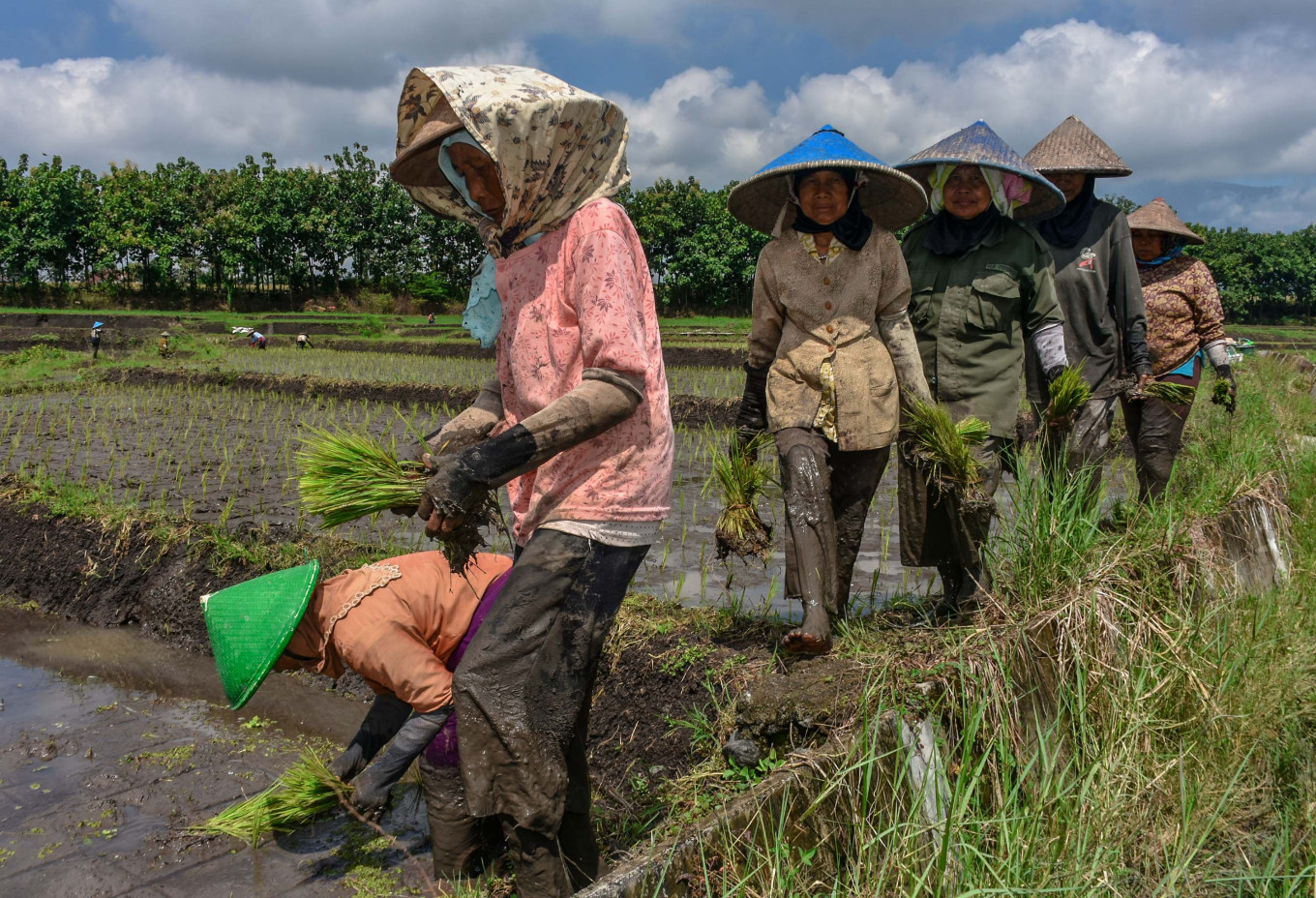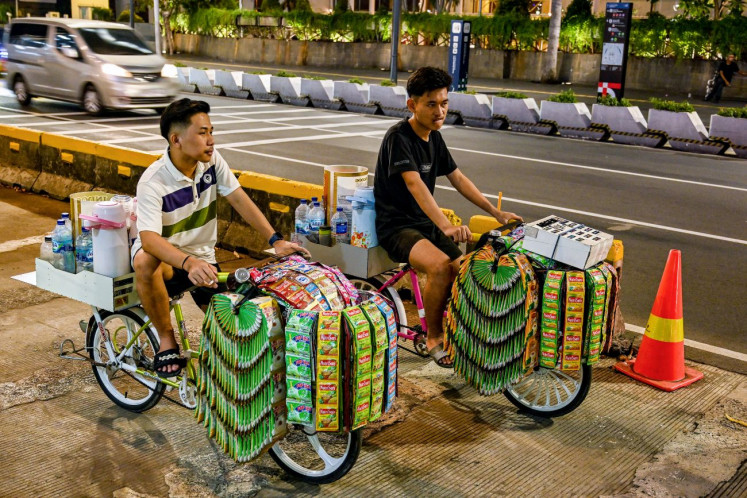Popular Reads
Top Results
Can't find what you're looking for?
View all search resultsPopular Reads
Top Results
Can't find what you're looking for?
View all search resultsCOVID-19's impact on growth by sector, region
The pandemic has had no direct impact on the agriculture sector.
Change text size
Gift Premium Articles
to Anyone
I
ndonesia saw 5.32 percent economic contraction year-on-year (yoy) during the second quarter due to the impact of COVID-19. Economic sectors that experienced the worst contraction included transportation-warehouse (-30.84 percent), accommodation-food and beverages (-22.02 percent), other services (-12.60 percent) and corporate services (-12.09 percent). Major growth drivers also contracted: manufacturing by 6.19 percent, trading 7.57 percent and construction 5.39 percent.
However, to find a silver lining in the dark cloud of this pandemic, we need to look at more than just the economic sectors but also examine the geographical distribution of the growth because in a crisis, there are usually areas that are more resilient than other regions, especially in Indonesia, the world’s largest archipelagic country.
There are several sectors that recorded positive growth: information and communication (10.88 percent), water supply (4.56 percent), health services (3.71 percent), real estate (2.30 percent), and agriculture (2.19 percent). The contribution of the agricultural sector to the national economy was the second-highest (15.46 percent) after the manufacturing industry (19.87 percent).
Statistics Indonesia (BPS) reported three provinces on Java Island recorded quite high growth rates for the agricultural sector: West Java (7.64 percent), Yogyakarta (10.06 percent), and East Java (7.46 percent). Besides that, West Nusa Tenggara (NTB) also recorded growth of 7.87 percent in the agricultural sector. This indicates that the agricultural sector is still the cornerstone of the economy in several regions.
The information and communications sector associated with digital economic activities contributed 4.66 percent (the fifth-largest) to the national economy. In this sector, the three provinces that recorded the highest growth were West Java (39.75 percent), Yogyakarta (20.74 percent) and Central Java (18.79 percent). It can be seen that several provinces in Java still have a big role in supporting the national economy.
Now if we look at the manufacturing sector, which contributes the most to the national economy, apart from several provinces that continued to record positive growth, two provinces had very high growth, namely North Maluku (60.49 percent) and Central Sulawesi (21.11 percent).
Furthermore, if we look at the construction sector, which has the fourth-largest contribution (10.56 percent) to GDP, almost all provinces have also experienced a decline. However, there was a province that recorded very high growth in this sector, namely Aceh (23.94 percent). This shows that development activities can still run in several regions and contribute to the economy of each region.
Further impacts of the COVID-19 pandemic on the economy can be seen from growth between the first quarter of 2020 and the second quarter of 2020. Nationally, the contraction was 4.19 percent, and the largest-affected sectors were the same as in yoy growth: transportation-warehouse, accommodation-food and drink, followed by services. However, the agricultural sector recorded high growth (16.24 percent), which according to BPS, was caused by a delay in the planting season so that the peak of the rice harvest occurred in the second quarter of 2020.
What is interesting to see is where the growth in the agricultural sector occurred. West Java recorded the highest rate for this sector (45.86 percent), followed by NTB and South Kalimantan (each 31.50 percent), then East Java (27.26 percent). This means that West Java and East Java, which are national food barns, are still producing significantly and contributing to the national economy. Within the information and communications sector which nationally grew by 3.44 percent, the highest growth took place in West Java (18.47 percent), followed by NTB (11.92 percent), Yogyakarta (11.76 percent), and Riau (11.23 percent). It is assumed that digital-based economic activities have increased quite significantly in these provinces.
Even though nationally the manufacturing sector contracted by 6.49 percent, there are still provinces that recorded positive manufacturing growth, such as North Maluku (29.20 percent), Aceh (16.19 percent), and NTB (11.81 percent) Thus, it can be concluded that several provinces have experienced positive growth in certain sectors, even though these sectors nationally experienced a contraction.
So what is the relationship between sectoral-spatial economic growth as described above and COVID-19? If we look at the accumulated development of daily cases of all provinces in Indonesia from March 2020 to mid-August 2020, the order of provinces based on the largest number of infection cases was Jakarta, East Java, Central Java, South Sulawesi and West Java.
With the fact that the agricultural sector in West Java could grow high on both a yoy and quarter-to-quarter basis, this development indicated that the pandemic had no direct impact on the agriculture sector. This occurred because the centers of the spread of COVID-19 are in urban areas, while agricultural sector activities are concentrated in rural areas.
Understanding the regional impact of COVID-19 can help guide national economic recovery policies to be more effective. Apart from social assistance and other fiscal stimuli, the government can intervene in activities that stimulate the economic sector. In areas where the number of COVID-19 cases is large, the focus of recovery policies can be directed at the agricultural sector and industrial activities that process agricultural products. In other words, development in rural areas. Meanwhile, in areas where the number of COVID-19 cases is small, the focus of recovery can also be directed at trade, construction and information-communication.
***
The writer is head of the research center for infrastructure and regional development, Bandung Institute of Technology (ITB).










